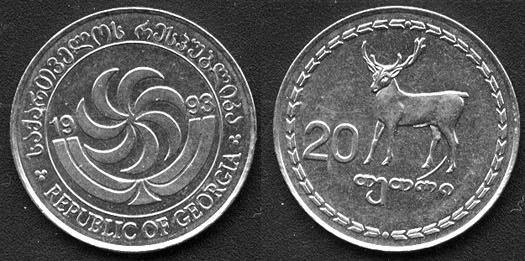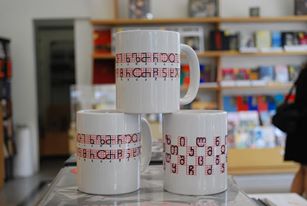A strange thing about the currency here is that it features a lot of English writing. Consider the non-deer side of the twenty tetri coin (100 tetris in a lari):

The top part of the coin says, in the Georgian alphabet, sakartvelos respublika. Now, it would not be surprising if this same phrase were written below in the Latin alphabet since, after all, nobody outside of Georgia has the faintest idea of how to read Georgian. That would be simple transliteration. This is not the case here. We see, translated into English (and not into Russian), Republic of Georgia.
If the use of English were limited just to this, it would not be worth remarking, but there are more extreme cases. Take a look at the five lari bill:

It doesn’t actually say “depositphotos.” This is just the best image I could find on Google.
I find it bizarre that the map on this bill should be in English. The Georgian names for Russia and Turkey and Azerbaijan are almost the same in English (ruseti, turketi, and azerbaijani respectively), and the literal translation for the Georgian name for the Black Sea literally does mean “Black Sea.” Fair enough. But the Georgian name for Armenia is Somkheti, which of course is not similar at all. Thus this bill features a word which is not only printed in a foreign alphabet, but is entirely foreign altogether. It seems to me that this must be very alienating to Georgians. Imagine if our money looked like this:

I can’t even remember what this alphabet is called, but it’s not Hindi.
On the other hand, the American one dollar bill features a floating eyeball, so who am I to criticize?












